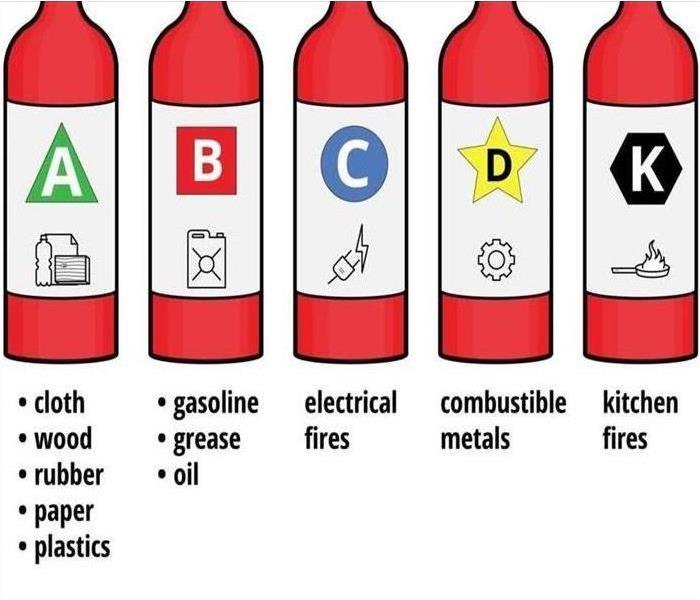Fire Extinguisher Guidelines
4/25/2024 (Permalink)
Here are some basic guidelines on fire extinguishers.
First, let's go over the different types of fire extinguishers.
- A - Used for materials such as cloth, paper, wool, plastics, etc.
- B - Used for flammable and combustible liquids: gasoline, grease, oil, etc.
- C - Used for electrical equipment and appliances.
- D - Used for flammable metals
- K - Used for animal and vegetable oils and fats.
A, B, and C are typically found in residential properties and businesses. D is typically found in factories and K is found in restaurants and kitchens.
Using a fire extinguisher is highly situational and one should follow this comprehensive checklist on deciding whether or not using a fire extinguisher is appropriate.
- Notify others in the building that there is a fire
- Call the fire department
- Physically able to use the extinguisher
- Small and contained fire
- Safe from fire's smoke
- An exit route or an escape path from the building
When all conditions are met in the checklist above then a fire extinguisher can follow the PASS acronym which is a simple set of instructions in order to operate an extinguisher.
- Pull the pin.
- Aim at the base of the fire. Don't aim at the flames but aim at the combustant.
- Squeeze the lever or handle. Use the extinguisher from a safe distance.
- Sweep the nozzle in order to cover all the area.
Lastly, it is advised to avoid dealing with fire damage yourself. Do NOT try to clean walls or surfaces of fire contaminated areas. Do not try to shampoo the carpets or upholstered furniture. Do not try to clean any electrical appliances within the vicinity. Also do not improperly clean any garments as the smoke odor might set in. Call and consult SERVPRO of Highland Park for any fire related damages.






 24/7 Emergency Service
24/7 Emergency Service
